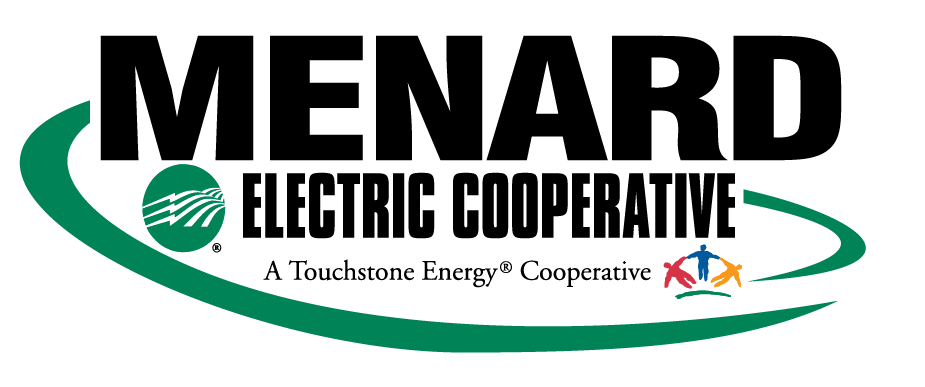 Some of our environmentally-minded members consider installing and interconnecting distributed renewable generation equipment (such as wind turbines or solar panels) behind their retail service meter to offset a portion of their electricity usage.
Some of our environmentally-minded members consider installing and interconnecting distributed renewable generation equipment (such as wind turbines or solar panels) behind their retail service meter to offset a portion of their electricity usage.
Menard Electric encourages member-owned generation (also known as distributed generation) if installed in a safe, cost effective, and environmentally-friendly manner.
If you are considering installation of distributed generation, see these 5 steps below.
Please contact us as a first step if you are interested in installing distributed generation (i.e. wind or solar). Our Engineering team can be reached by phone at 800-872-1203 or by email at info@menard.com.
We will give you information on our policies and answer any questions you may have. As with any construction decision, we suggest you perform a complete analysis of all the associated costs to determine if a return on your investment is plausible.
To facilitate an independent financial analysis, please see this Capital Cost Analysis Tool. We are happy to share your average cost per kilowatt-hour for energy purchased.
For those specifically interested in solar, check out Touchstone Energy's 10 Steps to Take Before Considering Solar.
The policies our Engineering team will assist with are located here:
Interconnection and Parallel Operation of Distributed Generation Policy
**This policy incorporates several Attachments that are provided in the Steps below
Net Metering Policy (effective January 1, 2025)
NOTE: Applications received after 4:30 p.m. on December 31, 2024 will not be eligible for Net Metering. Please see Net Billing Policy.
Net Billing Policy (effective January 1, 2025)
Interconnection of and Service to Qualifying Facilities under PURPA
Once you feel comfortable with how the system will integrate with Menard Electric, and have researched all the costs involved, you’ll be well prepared to find an installer.
Applying to interconnect to the Menard Electric distribution system is a key step in the process as it provides you a position in our queue. During this phase, our Engineering team will gather the specific characteristics of your project to use in performing an impact analysis of your system operating in parallel with our system.
With your authority, our Engineering team will gladly work directly with the developer you’ve chosen to design and install your system.
Be sure to fill out and return your Interconnection Application when ready.
Now that we know all the specifics of your system, we can assess its impact to ensure it interconnects correctly and safely with our system.
Our Engineering team will discuss any final details with you, or your developer if authorized. Based on the size of your system and the location of interconnection, we may need to include our Power Supplier in the analysis and approval process.
We will contact you when approval of your application is complete. We will also provide you with a written cost estimate of any equipment necessary to accommodate the interconnection, including the need for possible upgrades, improvements or operational restrictions.
Thereafter, your developer may commence installation of the system at any time.
Feel free to contact our Engineering team as your system is being installed if any questions arise. The recommended specifications for proper wiring and locating the required lockable disconnect device at the point of interconnection are available in this Diagram. It is imperative this disconnect remain open and locked until the Cooperative performs its final inspection.
Once installation is complete, BEFORE the system is energized, contact our Engineering team to make an appointment for inspection of the system.
This is also an ideal time to perform a final review of our Agreement for Interconnection and Parallel Operation of Distributed Generation to assure you are ready for interconnection.
Agreement for Interconnection between Member and Co-op (Attachment B)
The day has finally arrived! A member of our Engineering team and an Area Serviceman will meet at your service location to inspect the point of interconnection; we refer to this as performing the Witness Test. Provided you have satisfied the conditions precedent in the Interconnection Agreement and provided the Cooperative finds the system safe, reliable and operationally functional, a dual-register meter will be installed and your system will be energized.
While on-site, the Engineer will collect all charges and obtain signature(s) on the Agreement for Interconnection. A fully-executed copy of the Agreement will be returned to you, along with an Authorization to Energize Letter for your files.
Authorization to Energize Letter sample (Attachment C)
You are now a proud distributed generation member of the Cooperative. Congratulations!
